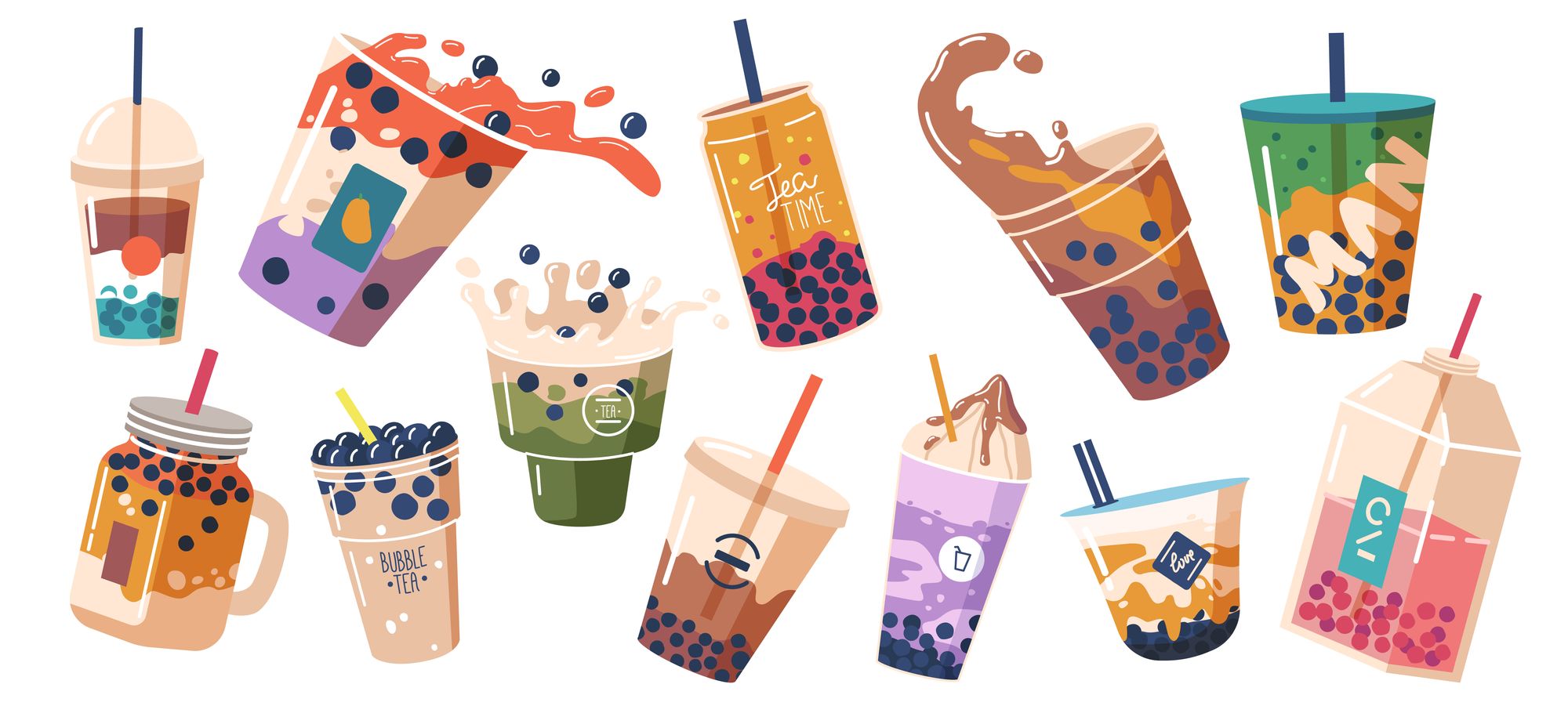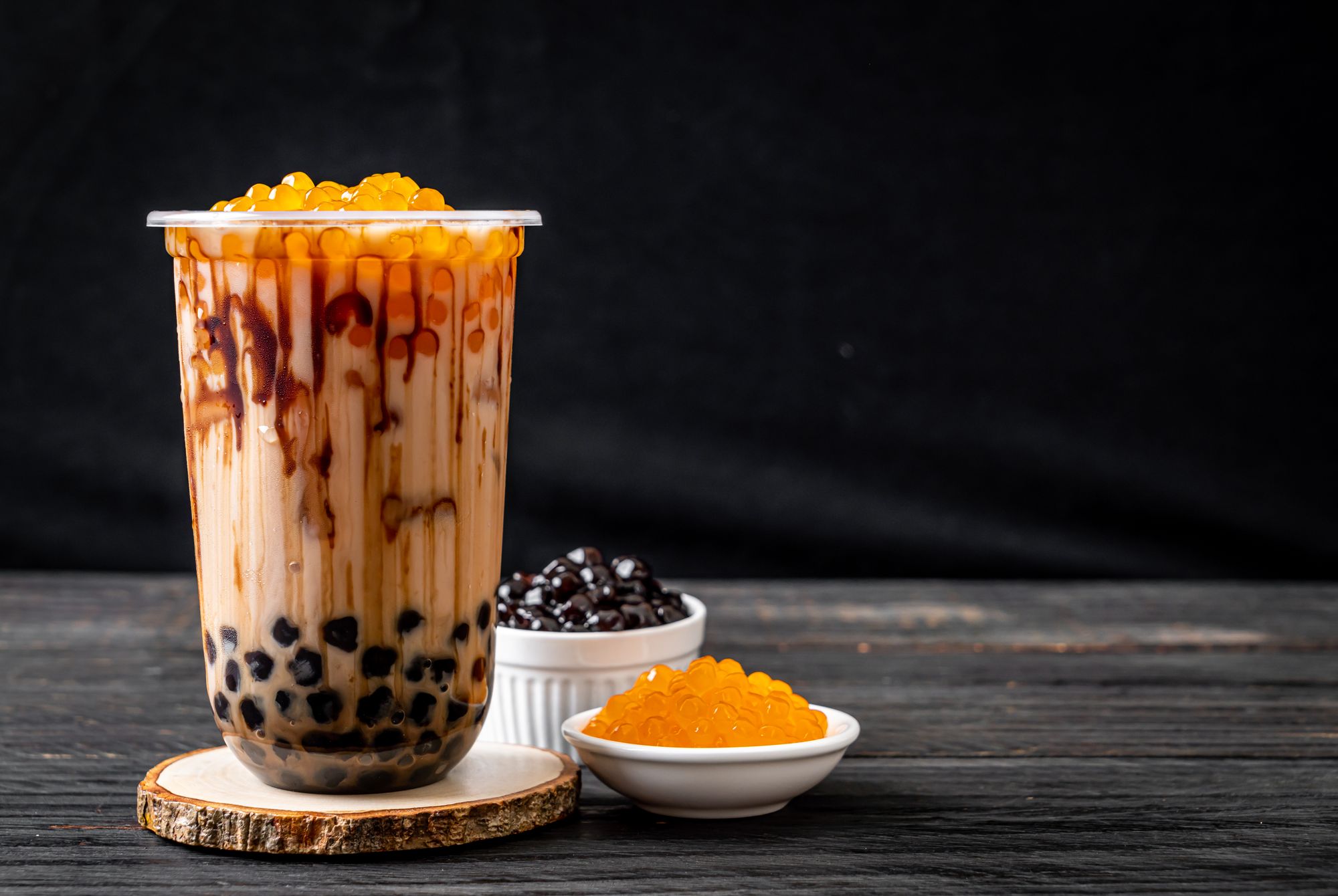Bubble tea is a staple of Asian cuisine, but in recent years it has really taken off in the U.S, and for good reason: the combination of milk, tapioca pearls, and other tasty toppings is seriously refreshing. There are countless variations of flavors and types of boba tea, making it easily loved by so many people. In case you’ve missed out on what this delicious treat is about or if you simply want to explore some new places for your next frozen treat fix, here’s everything you need to know about bubble tea in America.
The History and Origins of Bubble Tea
Bubble tea is a Taiwanese beverage that’s been enjoyed by many people around the world for decades. Although the initial origins of milk tea are unknown, the drink took off in Taiwan during the 1980s, when Taiwanese food scientists were looking for a new snack to sell in tea shops. They came up with the idea of mixing two already existing and popular treats which were milk tea and tapioca balls. This resulted in a delicious drink that would go on to become an Asian cuisine staple. Nowadays, it’s become very popular in Western countries, too, and it’s easy to see why.
Nutritional & Dietary Facts About Bubble Tea
Tea, milk and tapioca pearls alone have little calories, but it shouldn’t be much of a surprise that many of us enjoy our drinks to be sweet, which calls for some added sugars. Since there are so many variations of bubble tea flavors, the amount of sugar and calories can vary. However, an average 16oz serving of bubble tea with milk, sweetener, and boba will usually be around 300 calories and have around 45g of carbohydrates (which is mostly due to the sugar). Keep in mind that other than sugar and calories, bubble tea doesn’t provide a significant amount of any other nutrients and doesn’t have many health benefits. If you want a slightly healthier drink though, you can usually ask for it to be made with less sweetener.
Bubble Tea FAQs
Q: How is bubble tea made?
A: Bubble tea is made by mixing tea, milk, various flavors, and sugar with tapioca balls, then shaking it all together. Bubble tea generally ranges from 1-2% tea with the rest being milk. However, the quality of the tea used is important because this is the main flavoring agent. The best bubble teas are those which use high-quality tea.
Q: Is bubble tea the same as boba tea?
A: Yes, boba tea is another name for bubble tea. You can use the terms interchangeably.
Q: Is bubble tea the same as milk tea?
A: Milk tea is often the base for many bubble tea flavors, but not all bubble teas have to be made with it. Some, like the fruity ones, don’t use milk at all.
Q: Which one do most people order when ordering for the first time?
A: Most first time boba drinkers will order a familiar flavor and keep things simple. One of the most basic flavors is Traditional milk bubble tea with pearls. It’s made with black tea, milk, and sugar. You can’t go wrong with this one since it doesn’t have a unique flavor. It would be a great one to try out if you are new to bubble tea. Some other common ones are:
- Matcha bubble tea with pearls.
- Strawberry bubble tea with pearls
- Coffee milk tea with pearls
Q: Are bubble tea pearls vegan or vegetarian?
A: Bubble tea pearls are usually vegan, since tapioca is plant based. However, it could depend on the place. Some will sweeten their boba pearls with honey, so you should ask before you order.
Q: Is bubble tea healthy/good for you or bad for you? Why?
A: Bubble tea is not considered healthy, but it’s not bad for you if it's consumed in moderation. It contains sugar, so of course, that is something to keep in mind. It’s important to note that consuming too much sugar can lead to some long-term health conditions. However, that doesn’t mean you can’t enjoy the drink every once in a while. As long as you consume it in moderation, there are no significant health risks. Occasionally treating yourself to a tasty drink is okay!
Q: What bubble tea is the best?
A: Some of the most well liked bubble tea flavors are:
- Brown sugar milk tea- This flavor is one of the most popular. It simply uses brown sugar as the sweetner, which makes for a very tasty drink that has captured many people's attention.
- Taro milk tea- This flavor is very popular in Asian countries, and still growing on people in the U.S. It’s a pretty lavender color and can be described as having a nutty flavor with some taste of vanilla.
- Black milk tea- This flavor is very simple, just being black tea, milk, and sugar. The taste is pretty standard so most people enjoy this one.
- Honeydew milk tea- This flavor is super refreshing but not overpowering with the addition of honeydew fruit or powder to the milk tea.
Q: Are there any reactions or side effects to drinking bubble tea I should be concerned about? Is it allergy friendly?
A: The only concern is if you are allergic to dairy products, since bubble tea often contains milk. However, you can always ask the shop to use dairy-free milk like almond or oat milk. If you are celiac (gluten intolerant), you don’t have to worry either. Boba tea and tapioca pearls are gluten free.
Q: Does bubble tea contain caffeine?
A: If the drink was made with caffeinated tea, which most of them are, then yes. Black tea and green tea are most commonly used for bubble tea, both of which contain caffeine. However, most places will have decaf options for you!

Best Bubble Tea Restaurants Nearby
With all this talk of boba, you’re probably thinking, “Where can I find some boba tea near me?”
There are tons of great places where you can try bubble tea near you. Keep an eye out for your city’s own bubble tea guide coming soon!
